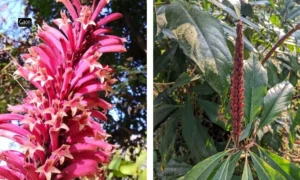Unnao, Uttar Pradesh)
Like past 150 years, on October 12, six days after the country observed Dussehra, thousands of revelers gathered at Unnao district’s Saket ghat to witness the burning of Ravan’s effigy accompanied by the usual fireworks. When asked about the reasons behind the delayed festivities, Ashok Rastogi, one of the organisers of the event informed that the origin of the tradition has deep socio-economic bearings.
“Kanpur is merely fifteen kilometres away from Unnao while Lucknow is almost 80 kilometres far. In the olden days, when these big cities celebrated their Dussehra with grand fairs, the population from Unnao used to flock to these cities to celebrate the festival. As a measure to ensure that Unnao wears a festive look on Dussehra and local businesses flourish, we have been celebrating it six days after the actual date for Dussehra,” Rastogi told Gaon Connection.
The Dussehra fair organiser further informed that the tradition was incepted in 1873 when an organiser named Manni Lal decided to delay the celebrations by six days. “Ever since then, Unnao has always enjoyed its Dussehra six days after the rest of India is done with it,” he added.
Meanwhile, Maneesh Sengar, the manager of the event pointed out that not only does the festivities remain vigorous due to the delay but also people from Lucknow and Kanpur also visit Unnao to enjoy the fair.
“So, it is an added advantage for the small businesses here. The sales are better because the footfall increases due to the crowds coming from the two neighbouring districts,” Sengar said.
Effigy makers demand better pay
Ramchandra Verma, a 42-year-old bamboo craft expert belongs to a family that has historically been associated with the making of the effigies of Ravana at the Dussehra festivities in Unnao.He told Gaon Connection that the high prices of edibles and essentials have made it difficult for workers like him to draw as much earnings from the effigy making as he used to earn almost five years before.
“A single effigy takes almost eighteen hours to be built. It is a laborious task and involves a lot of raw materials like ropes, coloured paper, bamboo sticks, clothes and crackers. We are paid Rs 1,500 per foot for the height of a single effigy. Simple materials like bamboo have become expensive. When I started off making effigies about twenty years back, a bamboo stick was sold at Rs 20-Rs 30. Today it is Rs 150-Rs 200 per stick,” Verma said.
“Also, the food prices are too high. We are just surviving somehow and our savings have dwindled. Government should think about the welfare of workers like us who are vital for these festivals,” he added.
















